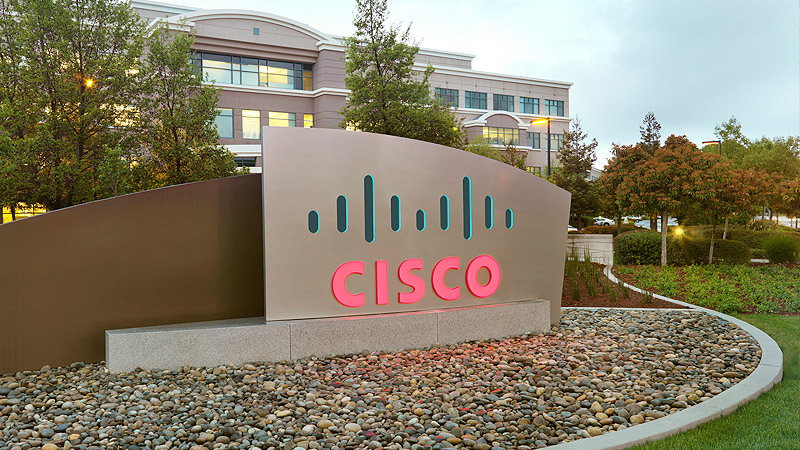SÃO PAULO, Brazil, April 29, 2010 - Cisco announced today the 13th edition of the Cisco Broadband Barometer, produced by IDC, showing that broadband connections in Brazil increased by 1.3 million during the second half of 2009. That represents a 9.5 percent growth for the second half of 2009 and a 27 percent growth in the Brazilian broadband market during 2009.
In the first edition of the Cisco Barometer, back in 2005, Cisco and IDC set a goal of 10 million connections by 2010. With the growth of mobile broadband, this goal was revised in 2008 to 15 million connections. This goal has now been surpassed: In June 2009 there were 13,702 million broadband connections, and in December this number reached 15,006 million. A new goal will be discussed for future editions of the Broadband Barometer, taking into account the broadband deployment initiatives by the Brazilian government and local investments by Internet service providers.
The drivers for this growth were the continuation of tax incentives for computers costing up to R$4,000 and the migration of users from dial-up connections to affordable broadband packages. The strong sales of computers across Brazil have helped the growth of fast Internet connections across all regions, as can be seen by the adoption of broadband outside of São Paulo.
Key Findings:
- The average transmission speed for fixed broadband keeps increasing, mainly due to upgrades in commercially available connections. Even though speeds between 512 and 999 kilobits per second are the most common (26.6 percent), they are already losing relative importance and should be surpassed by the number of connections with speeds between 1 and 1.999 megabits per second. Speeds above 2 Mbps represented the fastest-growing group in the period under study, reaching 16.1 percent in the first half of 2009 and 18.5 percent in the second.
- The state of São Paulo is maintaining its leadership in number of fixed broadband connections, with 41.3 percent of the total. But the northeast region increased its share of total connections, with 5.8 percent of the country's connections in first half of 2009 and 6.3 percent as of December.
- Except for "Popular Broadband," a social inclusion program from the state government of São Paulo, which costs R$29.50 per month (the lowest price in Brazil), the most significant price movement happened in the higher-speed offerings, with the ADSL 20 Mbps connection being reduced from R$487.50 in January 2009 to R$189.90 per month in January 2010. The average download speed for residential cable connections increased from 8 Mbps in January 2009 to 12 Mbps in January this year.
- Between July and December 2009, 455,000 new fixed broadband connections were sold in Brazil, representing a total of 11.489 million connections, or an increase of 4.1 percent from the installed base in the first half of 2009. This growth rate is quite a bit lower than the 12 percent level seen in the first six months of the year. Two causes were identified for the reduced growth: the Brazilian Telecom Regulatory Agency (Anatel) prohibited a large operator from selling ADSL services for a period during the second half of 2008, and mobile broadband, which took some market share from the fixed broadband market, experienced rapid growth.
- In the dedicated Internet Protocol broadband market, the small office/home office segment was the only one that grew, with a 0.5 percent increase. Other dedicated IP segments include large companies, government agencies and educational institutions. The residential dedicated IP segment had a decrease of 0.44 percent. All other segments had very small reductions, remaining practically stable.
- In Brazil, the penetration of broadband connections reached 5.98 percent; in the state of São Paulo, this percentage is 11.42. These numbers can still be considered low if compared with those of more developed countries, such as Germany (29.9 percent), Spain (20.3 percent) and Ireland (20.7 percent). Just over a quarter of Brazilian homes (27.4 percent) have broadband connections. In the state of São Paulo, this ratio is 38.8 percent.
- The number of broadband subscribers accessing the Internet through mobile telephony (through a desktop using mobile data cards, or a notebook or netbook) reached 3,517,095 in December 2009, a growth of 32 percent from the first half of the year and 77 percent from the previous year.
Supporting Quote:
- Rodrigo Abreu, general manager, Cisco Brazil:
"We are talking with fixed and mobile operators and the government to reevaluate the broadband market in Brazil. The strong acceptance and expansion of mobile broadband, plus the incentive actions conducted by the authorities, such as the National Broadband Plan, could change the market dynamics, stimulating digital inclusion like never before. In addition, the proliferation of mobile devices and the increase in the use of social networks and videos should account for increased data traffic in mobile networks. Globally, Cisco predicts that in 2014 mobile video will represent 66 percent of all the generated mobile data traffic."
Supporting Resources:
Technorati Tags:
Cisco, Brazil, Broadband, Information and Communication Technologies



